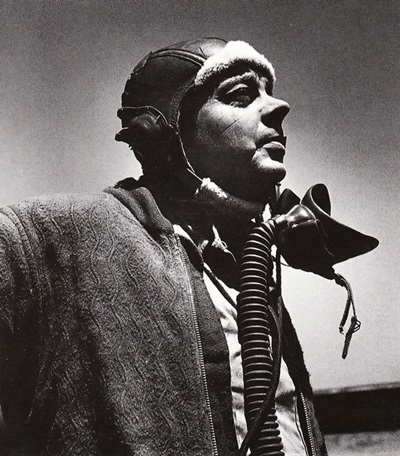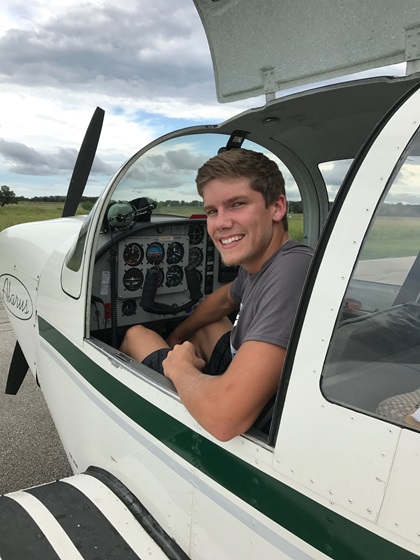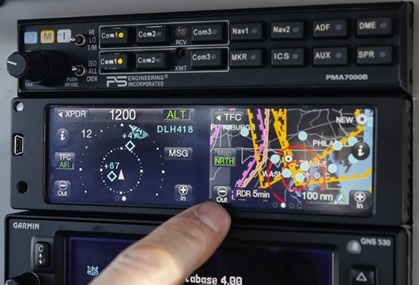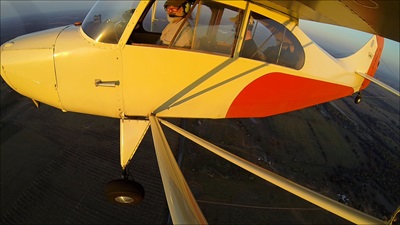“A goal without a plan is just a wish.”
– Antoine de Saint-Exupéry
Most people think of Antoine de Saint-Exupéry simply as the author of The Little Prince. But pilots know he was an aviation pioneer who established many of the airmail routes between Europe and Africa and South America in open cockpit biplanes in the 1920s and 1930s. And pilots know that through his writings, Saint-Ex shared some of the wisdom he gained from his aeronautical experiences.
 If your club is starting 2020 by setting some goals, you’re off to a good start. The next step is making a plan, like Saint-Ex suggests. Strategic planning is a healthy exercise for any club to undertake from time to time, but it does require some effort. In the January 2019 Club Connector we took a look at the Flywell Flying Club based in Anoka, Minnesota, which has successfully completed a strategic plan a few times over the past 10 years.
If your club is starting 2020 by setting some goals, you’re off to a good start. The next step is making a plan, like Saint-Ex suggests. Strategic planning is a healthy exercise for any club to undertake from time to time, but it does require some effort. In the January 2019 Club Connector we took a look at the Flywell Flying Club based in Anoka, Minnesota, which has successfully completed a strategic plan a few times over the past 10 years.
If you’re club isn’t quite ready to take the deep dive that is required for a strategic plan, consider spending some time setting some goals for 2020.
There are a few important aspects of goal setting to help your club achieve success. To start, write down the goals and make sure they can be measured. Next, share and review the goals with your members. If people don’t know the goal, they can’t achieve them, and without a way to measure success i.e. having a plan, the goal is just a wish that will soon be forgotten
Include Your Members
When establishing your goals, it’s important to have a good understanding of what your club’s members want to accomplish. This can be done as a guided discussion among members at your next regular meeting or by sending your members a survey. There are plenty of services available like Survey Monkey, which allow you to easily create a questionnaire that can be emailed out. Members take the survey online and you get a lot of data without too much work.
Whether you send a survey or just have a discussion, start by making a list of some of the important issues in the club that you can focus on – things like membership, finances, maintenance, aircraft or avionics upgrades and improvements, safety, pilot proficiency, social activities, or events (see this month’s Event Spotlight). Goals could be for the club as a whole or for individual members.

For instance, you may want to set a goal for the number of hours each club aircraft will fly in 2020. Break it down even more by setting monthly goals. Perhaps you want to set a goal that each member flies at least once a month, or flies a certain number of hours each month.
Members could be encouraged to get additional ratings – the obvious ones are adding an instrument rating or a commercial license. But members could be encouraged to get a glider rating, tailwheel endorsement, multi-engine rating, or perhaps become a CFI. Check out this month’s Question of the Month for more on how your club can “grow its own” CFI. It might mean they do a little flying away from the club, but the experience they’ll gain – and hopefully share with other members – should make them safer pilots and improve the club in general.
If members are flying the club aircraft more, they should develop a greater familiarity with the plane or planes, which also should increase safety. This could happen in two ways. Flying more often helps develop better piloting skills, and it also could have maintenance benefits as well. A pilot that flies the same aircraft regularly is more likely to notice if something is amiss during a pre-flight or post-flight check.
Maintenance Goals
Setting maintenance goals is another way to improve safety. How well does your club report squawks? How much time does it take to get problems fixed? How often is the plane down for maintenance – once a month, once a quarter? These are some areas to look at. Establishing maintenance goals and involving everyone in them will help increase awareness among members about the importance of treating the aircraft well. Keeping everyone aware of maintenance issues will also help get the aircraft back in the air sooner after squawks are reported. The benefit is not just having a well-maintained plane, but also developing a strong safety culture.
 Along the lines of maintenance, are there some wish list items you want to improve or upgrade on the aircraft? It could be as simple as budgeting to get a new canopy cover or perhaps a bigger investment like adding a second Comm radio or replacing an old GPS.
Along the lines of maintenance, are there some wish list items you want to improve or upgrade on the aircraft? It could be as simple as budgeting to get a new canopy cover or perhaps a bigger investment like adding a second Comm radio or replacing an old GPS.
Have you met the ADS-B requirement that took effect on January 1? If not, what is the club’s plan to address it? What about the aircraft interior or the paint – do either of those items need to be redone any time soon? If so, do you have a timeline on when to schedule the work and funds reserved for these major investments?
Big Time
Membership is a common discussion point. Your club might want to set a goal to add members, or maybe the goal is to encourage your members to be more active. That could mean more flying, as already mentioned, or it could mean more participation. The club could have a goal that each member participate in a certain number of meetings or events, like a plane wash or BBQ. Besides the added camaraderie, a more active membership serves as fertile ground for developing future club officers and leaders.
What about adding another aircraft? That is a goal of many clubs and it takes some planning. Do you have enough members to support another aircraft? What type of aircraft would fill a need for the club – are you looking for a good cross country performer, something a little different to attract new members, such as a taildragger, or maybe something with retractable gear for members looking to work on their commercial rating? Another consideration is cost and whether the club is looking to buy or lease. If adding an aircraft is a goal, you’ll need to make a plan.
 Even if your club is happy with the number of members and aircraft, setting financial goals for the future is always helpful. Goals could include building reserves and saving a certain amount of money this year towards a major expense like an engine overhaul, new avionics, or repainting your club plane. Or maybe the goal is to make the club more affordable by looking at costs and seeing if things could be done more economically.
Even if your club is happy with the number of members and aircraft, setting financial goals for the future is always helpful. Goals could include building reserves and saving a certain amount of money this year towards a major expense like an engine overhaul, new avionics, or repainting your club plane. Or maybe the goal is to make the club more affordable by looking at costs and seeing if things could be done more economically.
These are just some questions to get your club thinking about the things to accomplish this year. The key is to set a goal. Write it down. And develop a plan so you can measure your success. Otherwise, like Saint-Ex said, it’s just a wish.
Whatever your club’s goals are for 2020, our goal at the AOPA Flying Club Initiative is to have more people flying more and doing it safely and affordably. To do that we have a goal to help 35 new flying clubs get started in 2020 and to continue to help existing clubs achieve your goals. If you have questions, ideas, or need support, please reach out the Flying Clubs Initiative team at [email protected] or your local AOPA You Can Fly Ambassador.